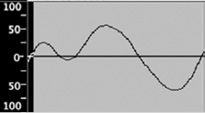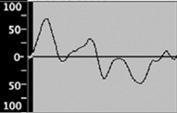| << Chapter < Page | Chapter >> Page > |


Duration
Every sound event has its unique duration, which we perceive as being either short or long, depending on the context. Several durations, one after another, create the rhythm of a piece.
Elements of Music
Another important rhythmic phenomenon is syncopation , which signifies irregular or unexpected stresses in the rhythmic flow (for example, straw- ber -ry instead of straw -ber-ry). A distinctive sequence of longs and shorts that recurs throughout an individual work or groups of works, such as particular dance types, is called a rhythmic pattern , rhythmic figure, or rhythmic motive .
Although the audible range of frequencies for human beings is from about 20 to under 20,000 vibrations per second, the upper range of musical pitches is only around 4,000 from high to low as well). Each element of a scale is called a “step” and the distance between steps is called an interval . Most Western European music is based on diatonic scales—seven- tone scales comprised of five “whole steps” (moderate-size intervals) and two “half steps” (small intervals). The position of the whole and half steps in the ascending ladder of tones determines the mode of the scale. Major and minor are two commonly encountered modes, but others are used in folk music, in Western European music before 1700, and in jazz. Another important scale type particularly associated with music from China, Japan, Korea, and other Asian cultures is pentatonic , a five-note scale comprised of three whole steps and two intervals of a step and a half.

Notification Switch
Would you like to follow the 'Music appreciation: its language, history and culture' conversation and receive update notifications?